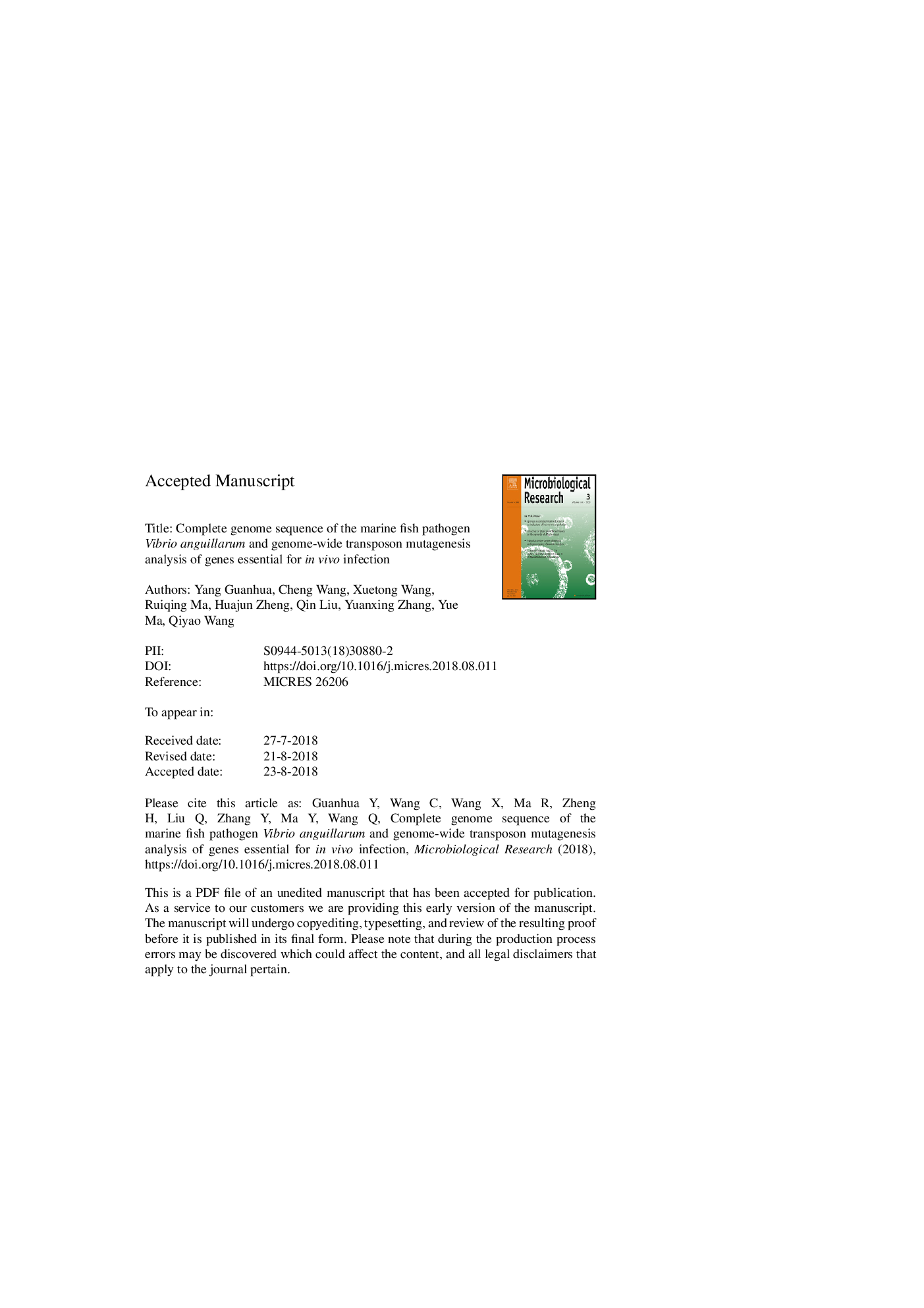| Article ID | Journal | Published Year | Pages | File Type |
|---|---|---|---|---|
| 9954413 | Microbiological Research | 2018 | 38 Pages |
Abstract
Vibrio anguillarum is a notorious bacterial pathogen that causes vibriosis in various marine farmed fish species. The highly pathogenic V. anguillarum strain MVM425 has been isolated from moribund turbot in the China Yellow Sea, but the genetic basis for its pathogenesis is undefined. Complete genome sequencing uncovered that the bacterium encodes 3985 protein-coding sequences (CDSs) on two chromosomes and 62 CDSs on the virulence plasmid pEIB1. To investigate the genes that are essential for its in vitro and in vivo growth, we applied transposon insertion sequencing technology (Tn-seq) to screen a highly saturated transposon insertion mutant library grown in Luria-Bertani broth with 2% NaCl (LB20) and in its natural host turbot. Tn-seq identified 473 and â¼173 putative genes as essential for its growth in rich medium and the in vivo infection process, respectively. Additionally, our analysis revealed that the genes are associated to various fitness levels in the liver, spleen and kidney, suggesting different genetic requirements for colonization in these organs. Furthermore, we validated our Tn-seq data using gene knockout mutants and in vivo infection experiments. Comprehensive functional genomics analysis highlighted the conditionally essential genes for important pathways involved in energy metabolism, nitrogen metabolism, nucleotide synthesis, amino acid synthesis, cofactors, siderophore synthesis, secretion (T1SS, T2SS, and T6SS), quorum sensing, and flagellum biosynthesis. This study provides a wealth of information about V. anguillarum genes related to infection in fish and will facilitate the understanding of its pathogenesis as well as the development of diagnostics and vaccines against the pathogen.
Keywords
Related Topics
Life Sciences
Biochemistry, Genetics and Molecular Biology
Biotechnology
Authors
Yang Guanhua, Cheng Wang, Xuetong Wang, Ruiqing Ma, Huajun Zheng, Qin Liu, Yuanxing Zhang, Yue Ma, Qiyao Wang,
